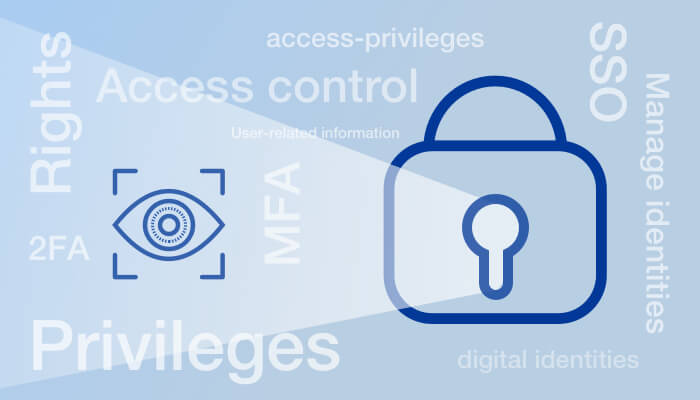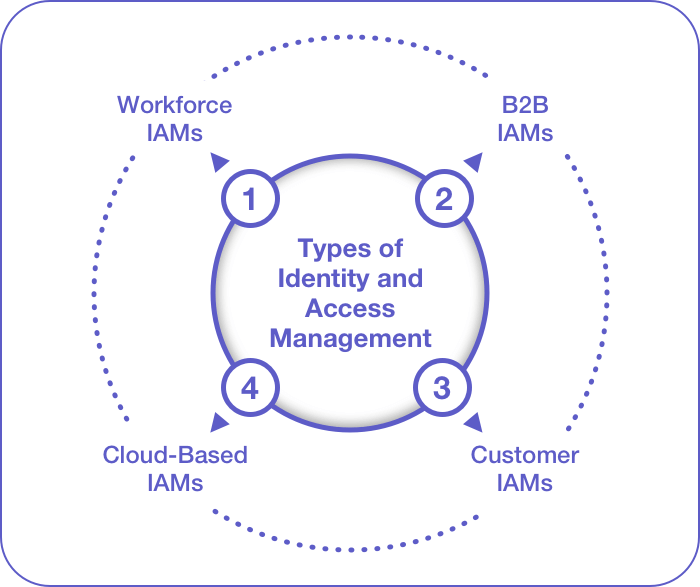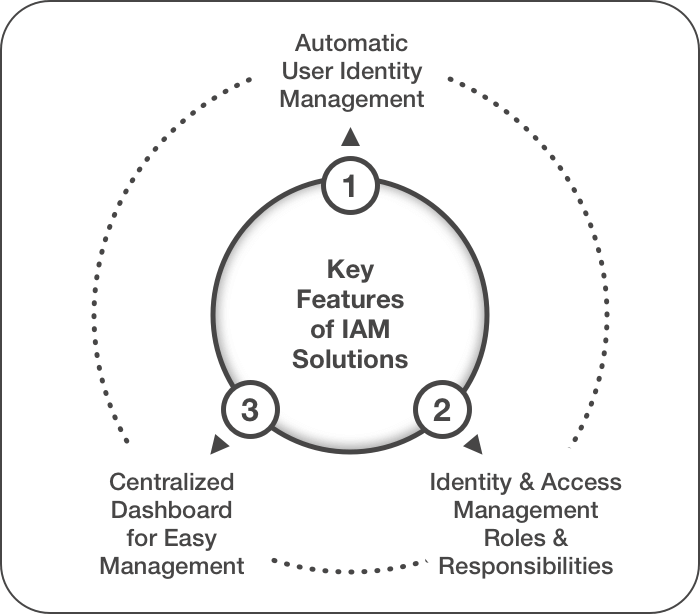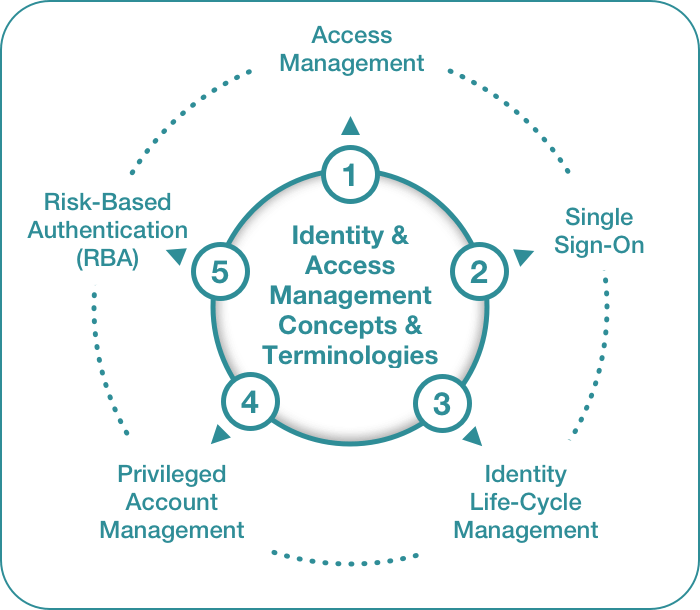Identity and Access Management (IAM): A Definitive Guide
With the rapid evolution of internet, cyber threats are also increasing exponentially.
To limit such cyber threats, organizations have to re-think about their security strategy.
Here comes Identity and Access Management (IAM) into action.
Let’s discuss about this in detail…
What is Identity and Access Management?

Identity and Access Management (IAM) is a discipline of cyber-security that enables an organization to set up rights, access control, privileges, and manage identities etc.
IAM solutions are leveraged by employees (employee identity management) of an organization and customers (customer identity management) leveraging their products/services.
Some well-known Identity and access management vendors or product providers are Sailpoint, Okta, Cyberark, Forgerock, etc.
IAM systems enable IT managers to monitor & ensure their employees & users like who is authenticating and how they are accessing the applications.
Apart from implementing identity management & access control, IAM systems also support various authentication methods such as multi-factor authentication (MFA), two-factor authentication (2FA), single sign-on (SSO), smart log-in, password less authentication, etc.
IAM’s core components include:
- A database containing user-related information, digital identities, and access-privileges
- Diverse security and IAM programs/tools
- A proper operation in arrangement for auditing and accessing history/logs within the system
Why do Companies need IAM Solutions?
Identity and access management in cyber-security plays a significant role for every organization.
According to Forrester’s Study, 83% of organizations do not have a mature approach to IAM Solutions, resulting in two times more security breaches.
IAM solutions act as a framework for setting policies, business processes, access controls, and technologies facilitating the administration of technical components and digital identities.
IAM can secure and monitor the access for remote employees, business partners, customers, and mobile users also.
IAM renders its features to all the different digital assets of the organization internally.
Account hacking due to poor passwords and credential theft due to improper credential management can often disappoint employees and customers.
Such attacks could lead to a massive data breach and damage to the organization’s reputation.
So, companies should leverage IAM solutions to avoid any data breaches, and to create a healthy work style.
IAM vendors can also deliver SaaS-based IAM, which came up as a new cloud-based service called IDaaS.
Organizations can leverage IAM as an on-premise solution and cloud-based IAM (popularly used when a company wants to utilize IAM for customers.)
IAM platforms allow IT managers or security admins to create and manage authorization.
These solutions come with a centralized user dashboard or via APIs.
Admins can use that dashboard to give the required permissions to new employees or privilege to access specific IT resources.
Likewise, if an admin leaves the company, the senior admin or IT manager can revoke access so that the IT guy cannot walk away with valuable information.
Types of Identity and Access Management:

Organizations have multiple classes of users requiring different levels of identity management and identity needs.
Such Identity management needs generally fall under one of these three forms like – corporate workforce, business partners, and their customers.
Even if organizations can render the same IAM solution for all these three, there are different types of IAM based on their working and their catering approach.
#1. Workforce IAMs:
Most applications leverage a wide variety of applications like Slack, GitHub, WordPress, HR Management software, server applications, etc., in their day-to-day workflow and some other applications are built in-house.
For all these apps, providing authentication and authorization to users, demands an IAM solution.
IAM allows integrating with all these disparate apps and synchronizing their security and identity management under one umbrella.
It increases workforce efficiency, protects the organization from attacks like brute force, account takeover, malicious login, and prevails Zero Trust security model.
IAM within the workforce also accelerates secure access to different applications and resources through single sign-on (SSO), password-less authentication, smart authentication, etc.
Lastly, like all other IAM types, it also helps in achieving regulatory compliance.
#2. B2B IAMs:
IAM for other businesses and organizations is the most specialized and complex system among all identity management systems.
That is because large MNCs and tech giants run on different back-end technology stacks.
In-house, on-premise IAM solutions often struggle to scale when onboarding various large customers.
That is why, many organizations prefer third-party IAM solution providers, especially when they need to move upmarket.
It allows such organizations to federate identities and secure digital user credentials on any technology stack or application authentication quickly.
#3. Customer IAMs:
Customer Identity & Access Management, popularly known as CIAM, is a very well-known type of IAM.
It enhances customer experience, provides access control, and identity security concurrently.
When organizations need to render customer-facing applications with digital identity-based authorization and authentication, CIAM solutions can provide the best service.
Companies can deploy Customer IAMs either as-a-service (via the cloud) or on-premises (in-house set up).
CIAM vendors and solution providers can cater to customized IAM solutions to the organization’s customers, aligning with the business policies and objectives.
#4. Cloud-Based IAMs:
Cloud-based IAM is an IAM solution that runs entirely on cloud infrastructure.
It is a next-generation IAM solution that renders a holistic shift of the entire identity management infrastructure to the cloud.
It leverages various security mechanisms like Single Sign-on, multi-factor authentication, smart authentication, privileged access management, identity governance, and much more.
Modern IAM solutions rely mostly on multi-protocol to virtually empower any IT resource to connect to the ‘native’ authentication language.
Cloud-based IAMs are also beneficial in terms of cost, scalability, and management.
Organizations do not have to buy on-premise hardware or any infrastructure to support such IAM solutions.
Such a cloud service is also known as IDaaS.
Key Features of IAM Solutions:

All IAM solutions come with three key features that cover a range of various functionalities.
Organizations that employ the IAM solutions enable or disable these features based on their requirement and scope of business operations.
Automation is one of the primary components of IAM that helps in achieving standardizing processes and workflows.
Under the umbrella-term IAM, three essential features usually come up that cover a vast range of functionalities like –
#1. Automatic User Identity Management:
Traditional legacy systems used manual access and user identity management as a standard approach for enterprise (or) organizations security.
Those systems had to tie up various resources of the organization, which also causes immense cyber-security risks.
The advent of the IAM solution reduces the manual approach and workload of IT admins due to a built-in automation system for digital identity and access management.
Automation in IAM solutions also helps in mitigating the risk of internal data theft or abuse through the repetitive process.
The IAM solution monitors and updates user rights for the entire duration of an employee’s user lifecycle (right from the joining date to the leaving date).
It keeps complete logs of every modification, adjustment, accessing, and authentication assigned to that user.
#2. Identity & Access Management Roles & Responsibilities:
Assigning roles and privileges are the fundamental feature of all access management tools.
Role-based access control (RBAC) is a method where the software automatically allocates default rights to employees depending on specific attributes (such as job designation, department, or location).
These systems also can automatically remove these roles and privileges as the attributes change (e.g., when an employee leaves the job or switches to another branch or department of the same organization).
IAM solutions can cater to these roles and access privileges through an on-premise solution or cloud-based service.
It automates provisioning of user accounts, password administration, along with features concepts like audit, compliance, data privacy, and identity governance.
#3. Centralized Dashboard for Easy Management:
Every IAM solution comes with a dashboard or control panel.
From there, the IT admin or security head of the organization can manage and control all the various access rights, privileges, and policies.
IAM solutions act as an interface between the user and the diverse technical assets of the organization.
Right from password management, user’s and customer’s identity, audit and compliance management, and updating policies, everything gets managed through the dashboard.
The IT admin can also tweak the different automation features regarding security, authentication, and authorization through the management dashboard provided by IAM solutions.
Regulatory Compliances in IAM:
All IAM solutions foster identity governance and regulatory compliance by delivering the tools to achieve comprehensive security, audit, and access policies.
IAM solutions stay aligned with all the latest regulatory compliance and strategies necessary for managing user identity.
The government of different countries wants companies to preserve and handle customer and user identity carefully.
Regulatory compliance like PCI, GDPR, Gramm-Leach-Bliley etc., hold organizations accountable for managing and accessing customer and employee information.
But all these compliances are too complicated and managing or staying up-to-date with them internally by any organization is challenging.
That is where Identity management systems can come to rescue the organizations and comply with those regulations.
If an organization tries to manage all these compliances manually, they will eat up large swaths of time, and money, of course.
Organizations that do not comply with or stay up to date might become the victim of potential fines and other legal action.
Identity Analytics & Intelligence in IAM Systems:
Modern IAM systems come bundled with identity analytics and intelligence for a better and intelligent solution.
Running analytics dynamically helps manage access decisions intelligently.
Also, IAMs can autonomously identify and survive identity risk on user profiles when any authentication occurs on any application usage.
It ultimately reduces the manual effort and helps in enhancing the accuracy of security operations.
Almost all IAM solutions leverage AI and ML algorithms that can intelligently identify and manage user actions and possibly gather, analyze, and disclose every access-related risk factor appropriately.
Such algorithms could also keep track of data loss, operational inefficiencies, and negligence to comply with regulatory standards.
Identity & Access Management Concepts & Terminologies:

#1. Access Management:
It is a blend of process and technology that helps in controlling and monitoring network access.
Popular terminologies like authorization, authentication, security auditing, etc., come bundled with access management.
It acts as a part and parcel of both on-premise and cloud-based IAM solutions.
#2. Single Sign-On:
It is a kind of access control that allows users to sign in to one account and access multiple accounts through that verified credential.
A user can use a single username and password and access an application or network without applying different credentials for each of them.
#3. Identity Life-Cycle Management:
Identity lifecycle management refers to the set of methods and technologies that helps in maintaining, managing, and updating digital identities in a system.
It includes operations like storing user identities, synchronizing identity, provisioning, de-provisioning, and the continuous management of user attributes, entitlements, and credentials.
#4. Privileged Account Management:
Privileged account management refers to the process of governing and auditing user accounts and their respective data by setting privileges for the user.
Here, the IT admin will define the user’s job, responsibility, or function and accordingly set access privileges or grant administrative access to systems.
A privileged employee, for example, can authenticate, set up an account, use corporate apps, and delete accounts or roles.
#5. Risk-Based Authentication (RBA):
It is a modern form of authentication that dynamically regulates authentication mechanisms and requirements depending on the user’s situation or posing threats.
For example, if an employee attempts to authenticate from a geographic location or IP address that does not relate with the previous log-in patterns, an additional authentication verification (e.g., biometric authentication) will come up to prevent unauthorized access.
Conclusion:
We hope this comprehension has given you an overall scenario of what an IAM solution is and how it benefits an organization.
Choosing the appropriate identity and access management vendor is also essential to accomplish a tidy workflow without data breaches, unauthorized access, or mishandling of identity.
IAM solutions also increase productivity by automating different authentication and access control operations.
Secure your organization right now – Start 15 Days Free Trial

